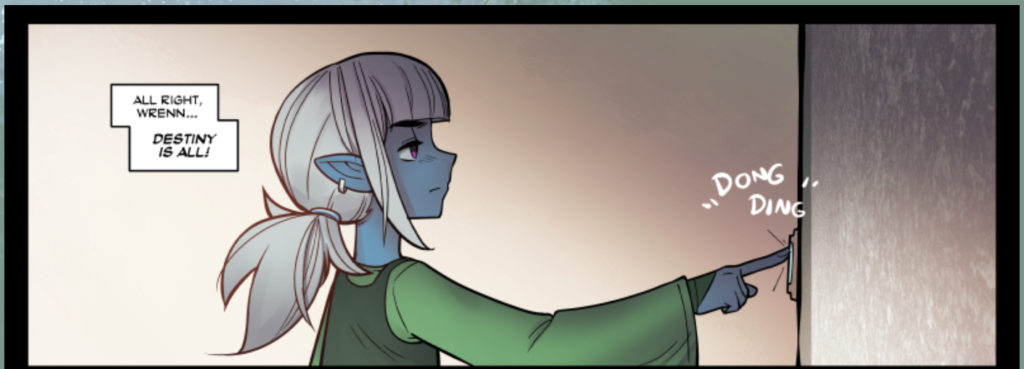Another Correct Exclamation! Yay!
I’m referring to the expression “all right.” Everybody always writes “alright,” which is incorrect. (“Already” is okay) So when I see it done correctly, I like to celebrate. Here’s the first panel:

The site is a long sci-fi fantasy adventure, and this is the middle of the story, so feel free to poke around the site if you want a better idea of what’s going on.
Yes, I know we’re going to lose this battle.
Subscribe to this blog's RSS feed
Which is the Verb? Loan or Lend?
A lot of folks say “loan” when they mean “lend.” Like so many others, he got it wrong in the second panel, but then he got it right in the last panel!
Never say “loan” (the noun) when you mean “lend” (the verb).
Bad Comma!
We English teachers/tech writers/curmudgeons have an informal rule:
Never separate a subject and verb with an odd number of commas. The way this sentence does:
But that otherwise mundane act, has sparked a state investigation.
https://s2.washingtonpost.com/camp-rw/
Put no comma between “act” and “has”! Harrumpf.
I like my posts to have pictures, so here’s a picture from the movie that the essay containing the bad sentence is about:

Double Dactyls
I recently promised to mention this poem format, so here it is.
First an intro: This poem is a style called a double dactyl.
Here are the rules:
- two four-line verses.
- First three lines in each verse have two dactylic feet. (Dactyl: strong weak weak)
- Fourth line has one dactyl plus one beat (called a choriamb).
- Only the fourth lines rhyme.
- One line in the second verse is supposed to be a single word.
- A person must be mentioned by name someplace in the poem.
I discovered a while back that a co-worker’s name is a double dactyl, so I threw together a poem about him:
Timothy Fennema
Works for the government,
Helping protect us from
Cyber-attack.Give him some work to do,
He’ll do it flawlessly
So we can stand secure—
He’s got your back!
Now you try it!
A Just Plain Limeric Lesson
Another form I like, called the double dactyl, appears somewhere in this blog, but I can’t find it. I might have to do a repeat. Here’s an official definition: The double dactyl consists of two quatrains, each with three double–dactyl lines followed by a shorter dactyl-spondee pair. The two spondees rhyme.


